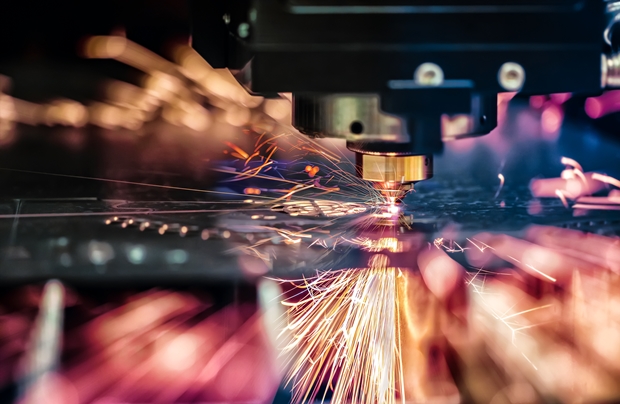- 2022/09/28
- 2394
- 36
The machine tool industry has bounced back from the pandemic. As the economies restarted in different countries, the booming demand from the private sector has accelerated manufacturing production and investment. This has been beneficial to Taiwan’s machine tool industry. IEK Consulting forecasts the production value of Taiwan’s machine tool industry to be NT$138.74 billion in 2022, up 6.0% from 2021. That said, the top priority for the industry now is to build the resilience to ensure operational continuity to enable it to serve as the trustworthy partner to its customers amid further waves of COVID-19 infections around the world.
Meanwhile, geopolitics has been an increasingly important factor to supply chains since 2018. The dispute between China and the U.S. has prompted the relocation of Taiwanese capacities in China to other locations and the use of nearby markets and local suppliers. Localized short chains will become the strategic pursuit of companies. Going forward, the machine tool industry should keep abreast of the following three issues and ensure early readiness:
Issue 1: Smart manufacturing has become the growth driver after the pandemic
The European Machine Tool Exhibition, EMO 2021 revealed that most of the leading machine tool companies were focused on smart manufacturing. Big data, artificial intelligence and industrial Internet of Things (IIoT) are being integrated into machines. Internal resources (including machinery and equipment systems information, workers’ technical knowhow) and market information are connected to the information management platform facilitating real-time oversight of the status across production lines, monitoring of problems onsite and providing key information for optimization of production strategies. The automation of production lines and factories and the maximization of production efficiency are the megatrends driven by leading players in the machine tool industry.
Issue 2: Admission to the CPTPP
The Comprehensive and Progressive Agreement for Trans-Pacific Partnership (CPTPP) came into effect on December 30, 2018. The current CPTPP members are all signatories of the Trans-Pacific Partnership (TPP) with the exception of the U.S. This includes eleven countries, i.e. Australia, Brunei, Canada, Chile, Japan, Malaysia, Mexico, New Zealand, Peru, Singapore and Vietnam. Potential future members are China, the U.K., Thailand and Taiwan (application submitted on September 22, 2021).
Admission to the CPTPP would grant Taiwan tariff exemption and help Taiwan’s machine tools and industrial equipment to expand into overseas markets such as Australia, Japan, Korea, Mexico, the U.K. and Southeast Asia. However, the high quality and precision of Japanese machine tools will squeeze tier 2 and tier 3 Taiwanese machine tools in the Taiwan automobile and motorcycle market. (The use of Japanese machine tool products will enhance the quality of Taiwanese automobiles and motorcycles to a certain degree.)
That said, the pros of CPTPP admission still outweigh the cons for the export-oriented machine tool industry in Taiwan. The industry’s investment and development of high-end tools and key components during recent years have achieved good results. There are also plans from the government, institutions and trade organizations to facilitate collective and collaborative efforts among Taiwan’s small and medium enterprises (SMEs) that are not so well-resourced. As Hon Hai’s Mobility in Harmony platform is progressing at full speed, equipment makers can enhance their international exposure and access early opportunities in the automotive market by joining the alliance.
Issue 3: Net zero and green transformation
The UN Climate Change Conference in Glasgow (COP26) in November 2021 set the target to limit global warming to 1.5 degrees by 2050 and urged countries around the world to come up with tangible carbon reduction timeframes and proactive climate actions. In July 2021, the European Parliament approved the Carbon Border Adjustment Mechanism (CBAM), to be effective from 2023 and be fully implemented in 2026. The imminent legislation of carbon taxes by the European Union will initially cover carbon intensive sectors such as steel, aluminum, fertilizer and electricity by asking importers to report carbon emissions. After the formal implementation in 2026, in the absence of proof that carbon taxes have been paid in other countries, it will be necessary to purchase CBAM certificates for imported products to offset the carbon content that exceeds the standards. Certificate pricing will be based on the average auction price of carbon credits on the European Union’s Emissions Trading System (ETS). In sum, net zero emissions have quickly become a top priority for corporates around the world.
Most of the global leading companies such as Apple, Microsoft, Google and Meta (formerly known as Facebook) have announced timeframes for achieving net zero emissions and have translated this into carbon reduction requirements for their suppliers of components, materials and equipment. Efforts will become more intense as the net zero targets become closer. Fortunately, the machine tool industry in Taiwan has been working towards the green concept advocated by leading players in Japan and Europe starting with the accelerated adoption of lightweight design, innovative materials and manufacturing processes. The products have also been adjusted for green manufacturing. This encompasses design changes and modifications for better electricity consumption (such as for motors, lubrication and cooling components) and to reduce waste and emissions. Meanwhile, big data, simulation and analytics, the use of AR/VR devices, customization of man-machine interfaces and smart manufacturing can also reduce energy consumption and achieve green manufacturing.
Export-oriented industries in Taiwan are faced with the risk of carbon taxes amid the global drive for environmental sustainability. It is hence necessary to prepare early for carbon reduction during the production process by leveraging digital and smart technology. The machine tool industry is advised to respond to initiatives such as RE100, EP100, EV100 and ESG and speed up green transformation for early readiness of supply chain sustainability.
In conclusion, Taiwan’s machine tool industry should seek to enhance its export competitiveness in 2022 as Taiwan seeks to actively join international trade agreements. In the post-pandemic era and trend of net-zero carbon emissions, integrating technology to improve industrial resilience and pursue green transformation will be the best approach to ensuring the sustainable competitiveness of Taiwan’s machine tools.

